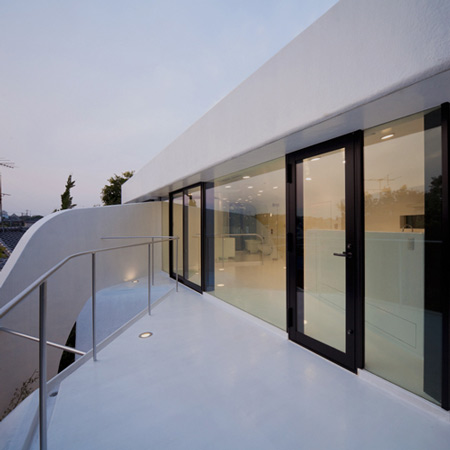
Celluloid Jam by Norisada Maeda Atelier
Here's another residential project by Tokyo designers Norisada Maeda Atelier, who designed the Plastic Moon house in our previous story: this time a house near Yokohama, Japan.
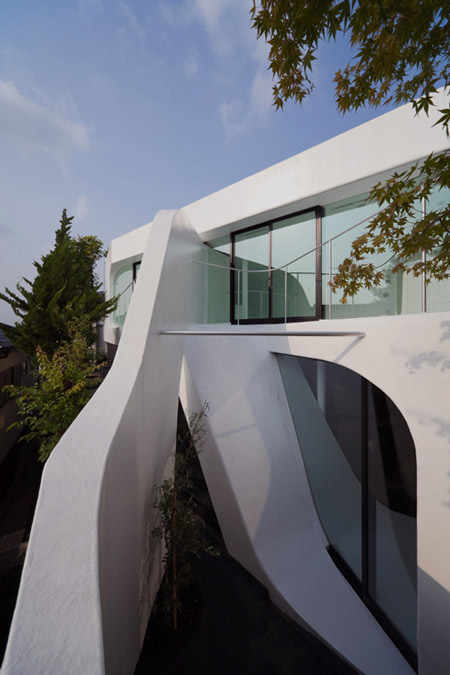
Entitled Celluloid Jam, the building features walls that aim to flow continuously around the exterior, from inside to outside and back again like a Moebius strip.
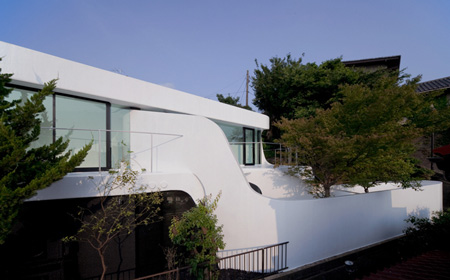
Windows and doors form cuts and distortions in this geometry.
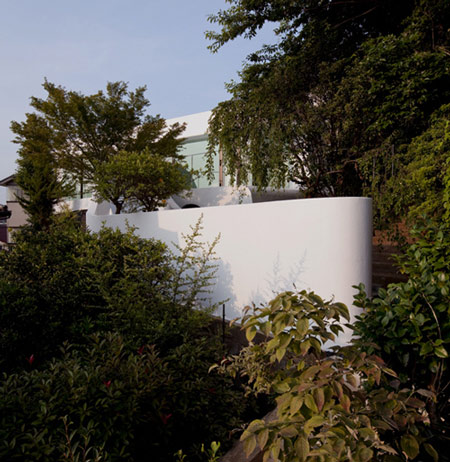
More about Norisada Maeda Atelier on Dezeen: Plastic Moon house
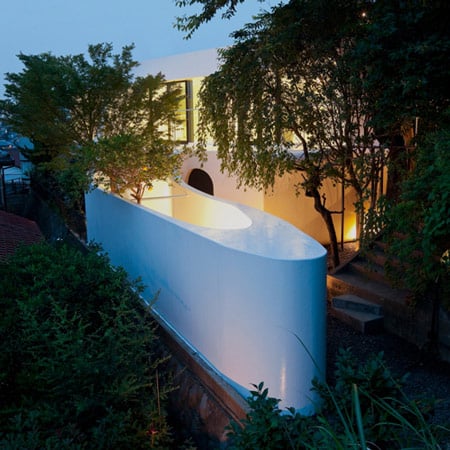
Here's some more text from the architects about the project, followed by Norisada Maeda's views on architecture:
--
Celluloid Jam
Imagine a site you might picture, when letting your mind wonder back in time: damp soil forms a soft ground, catching your footsteps, ancient, weather-beaten stairs, that have been used in earlier times as an earthen path, a lovely old retaining wall and carefully cherished plants.
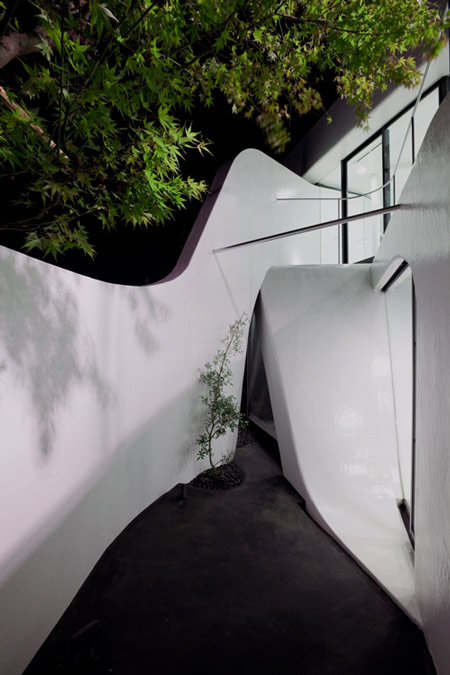
When we first set foot on this old soil in the city of Myoren-ji, we not merely got interested by this lush site, but rather fascinated by its' overwhelming beauty, that laid in every single FIBRE.
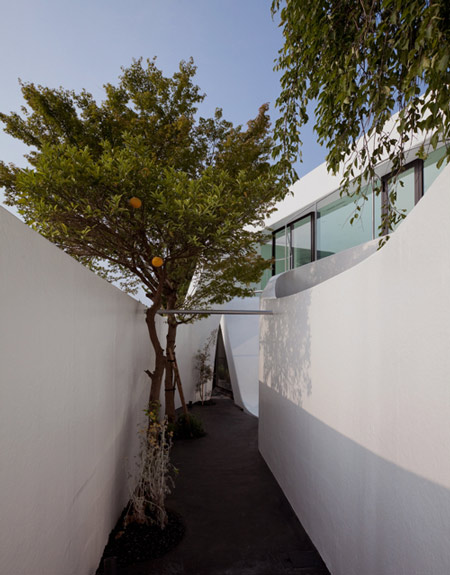
Such a feeling should never be seen as something disturbing, when it comes to architecture, moreover should it be as such occupied by the grounds' fascination.
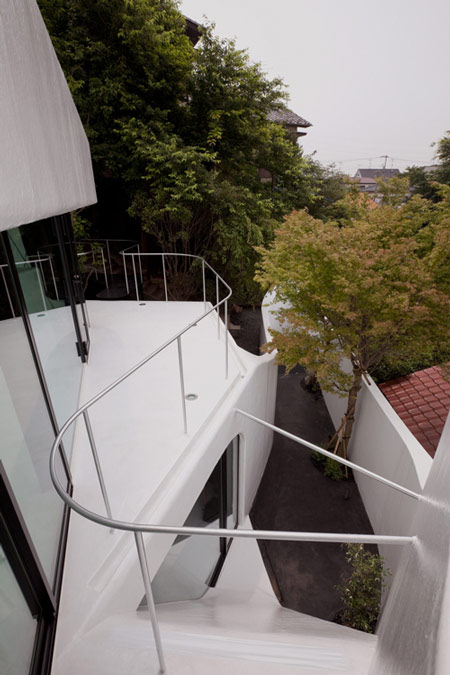
To put it in other words: to build an architecture does not merely mean to "put something on the ground", but rather to come closer to the grounds' scrupulous dealing.
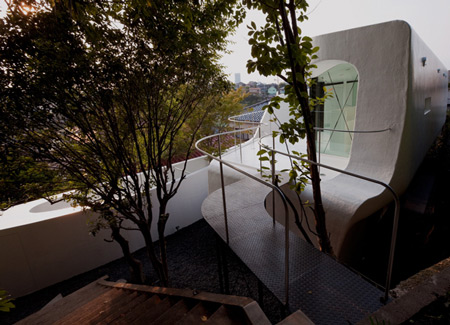
If you let your finger run across the complete surface of Celluloid Jam, no matter where you would start, you could
a) go in one round from exterior to interior and back to your starting point without taking a break.
b) touch every point on the exterior as well as on the interior and returning back to your starting point without lifting your finger once.
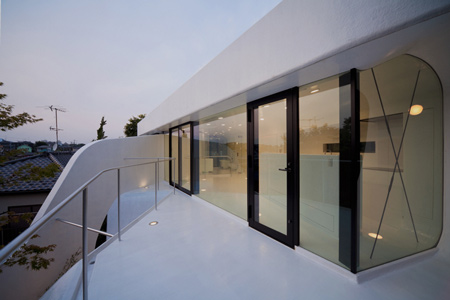
On one hand there is the surface, which results as a flow of the architecture from outer wall to roof to flooring to interior wall to ceiling and can therefore be seen as a seamless structure. While on the other hand the shape itself is being created by cutting, opening and bending the so called Moebius strip (which is formed topologically by twisting and turning a belt in shape of the number 8).
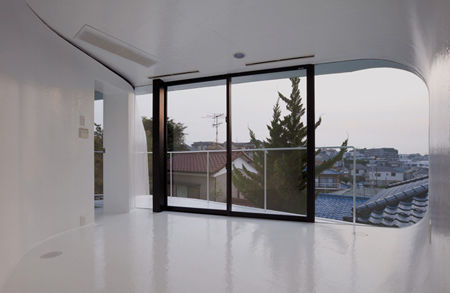
You could feel the longing for the ground to become one with the architecture. So in order to create this connection of exterior rendering, plants, rooms, retaining wall, terrace, ancient stairs, patio and balcony with geometric help, the two components (architecture and nature) have been slowly combined to one united mass by applying adhesion.
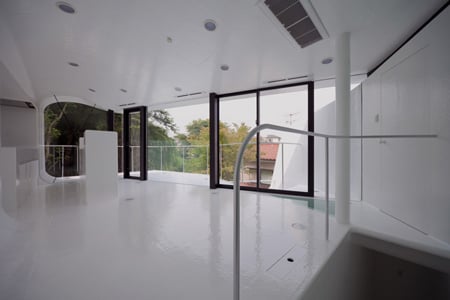
To underline this impression, Celluloid Jam's complete surface has been realized without visible junctures. The wooden construction is revetted by fibre restrained plastic to create one unique surface of both interior and exterior and furthermore to form one flowing shell, in which the punctual static loads are being reduced, while the static loads can be evenly spread. So the architectural shell approaches its inspiring natural example: the egg shell.
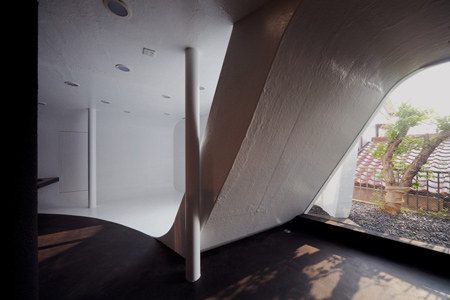
On top of the soil, where the Moebius strip touches the ground, the border between nature and the architecture dissolves into nothing, just like melting plastic. This separation is merely seen and projected by the eye.
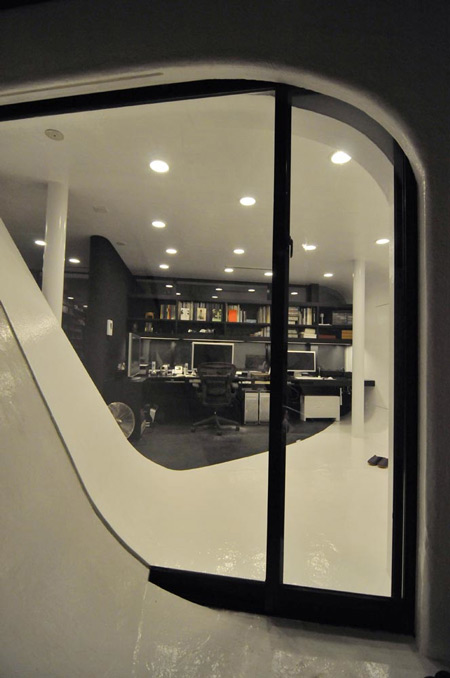
On Architecture
I believe that architecture needs two antithetical directivities.
In rough terms, these would be "form" and "will".
The former "form" is a preventive measure to protect the architecture being created from the boundless and fleeting whims of the creator. A term more readily understood for this is "rules". Thanks to the "rules", an architecture does not emerge along with the passions of the creator in the process of being kneaded in his hands, but rather is born as an entity distanced from such personal circumstances as much as possible. Such creation fundamentally does not rest on the idea of "anything goes", rather, it is mostly dependent on prohibitions stating "thou shalt not".
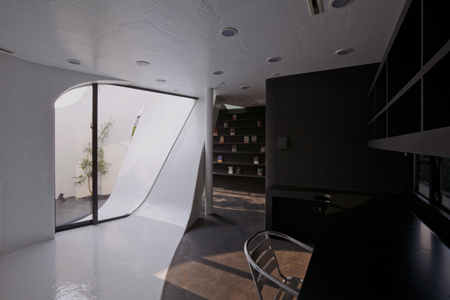
The "rules" per se are much like those in sports, and are initial agreements such as "use of hands is not permitted in soccer", for example. The very instant the "rules" are laid down, this is the kick-off for an exciting "architectural game" for the audience. To reiterate, architecture is entrusted to certain "rules" void of the whims of the architect, so the "inner side" (passions) of the maker is not so readily manifested on the "outer side" (expressions). This means that glib romanticism is averted, and the architecture takes on a more mathematical nature.
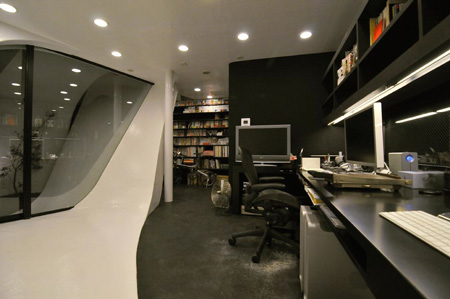
Though strange to say, this is a phenomenon wherein the creator himself entrusts his creation to something which is not himself. A process to remove as much "self" as possible. While the traditional Japanese arts of Noh drama, gardening, and flower arranging all allow for limitless interpretation, the preconditions thereof are always "rules, i.e., 'rites and methods for removal of self'" which are exacting to an almost-excessive degree.
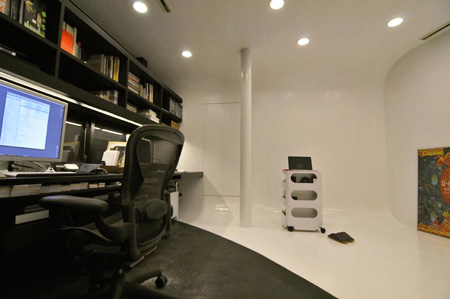
The later "will" is antithetical to that which enables spatial intent to be comprehended only by appending posterior epistemological interpretations using torturously elucidatory words. This is the untamed mind of the creator, a will with a temperament so hot that it must no doubt burn anything with which it comes into contact, that "creates" the very weight and density of the air therein. Here, space is powerful, ravenous, and vulgar, heading toward a sort of romanticism.
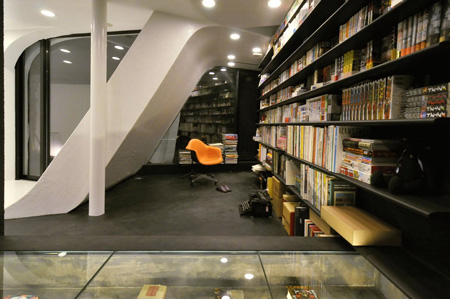
In other words, while the prohibitions called "rules" are set, the game itself is "the intensity of the 'will' to imagine what will be rendered", so as to be most exciting and imagination-provoking for the player. I believe that creation takes on sobriety only when the two extremes of "removal of self" and "based upon self" are in satisfactory balance.
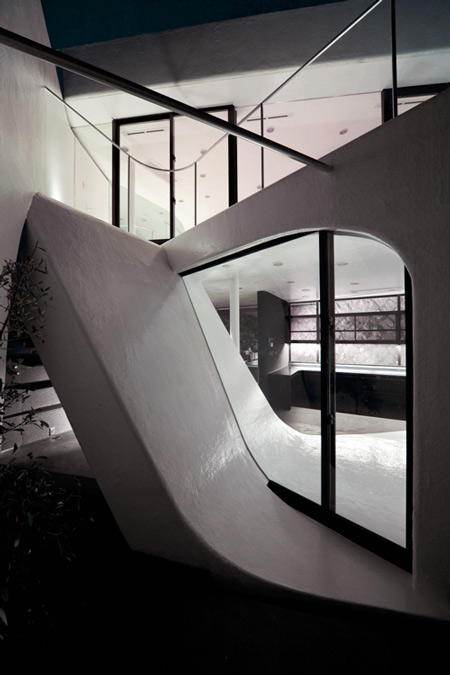
In geometry, "Euclidean geometry" which has set a rule that "parallel lines never meet" and "Non-euclidean geometry" which has set a rule that "parallel lines do meet" both exist as consistent schools of geometry. This is an example wherein two sets start with mutually contradicting "rules", but are both capable of producing "correct math". Just like no one would ask which of basketball or soccer is correct.
That is to say, the originating creativity for an architect is not only the externally-visible form, but rather in the way in which the "rules (axioms)" are set in the stage of production. An architect functions to devise the rules for soccer and basketball, and then sits back to watch the subsequent game unfurling, the output therefrom corresponding to the random daily input by the occupants.
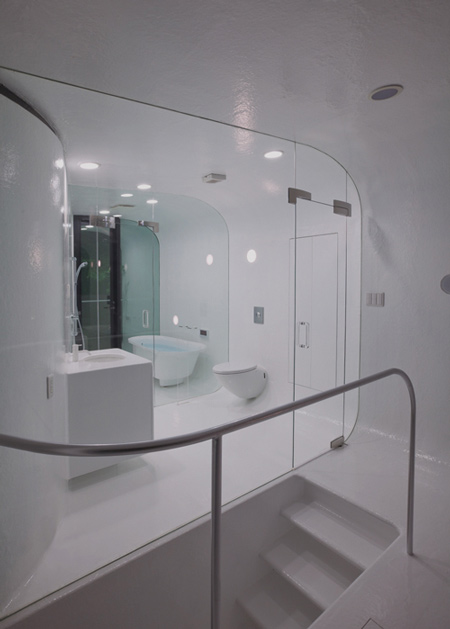
In Japan, these antithetical directivities are referred to as "Kuh".
"Kuh" is "between" "existence" and "non-existence", but is by no means a simple happy medium between the two. Though this may seem elusive to some, "Kuh" is an "existence" in light of "non-existence". For example, debating whether architecture is "transparent" or "non-transparent" is a total waste of time. The pendulum of such a dichotomy will swing infinitely.
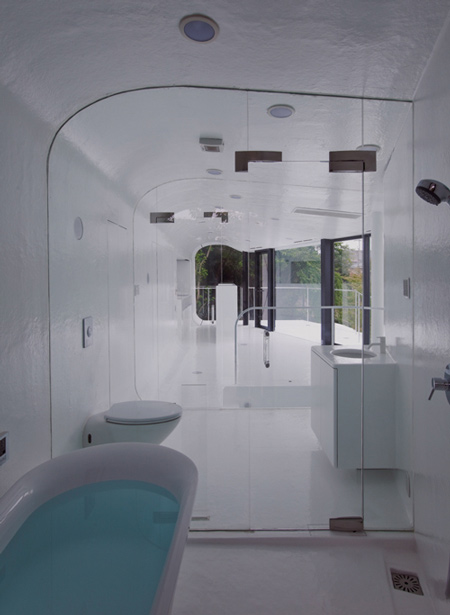
What is important for an architect is in the "fundament" of both, and is a quest into the "kuh" which creates both, and creates the difference itself between both. This idea is totally different from "harmonization of both".
For example, when we calculate the area of a square 20 cm on either side, we use the function of Y = X2. If X = 20 m, then Y = 400 m2. Now, both 20 m and 400 m2 are tangible "existences". However, a square 0 m on either side would yield an intangible area of 0 m2, which is nothing, i.e., "non-existence".
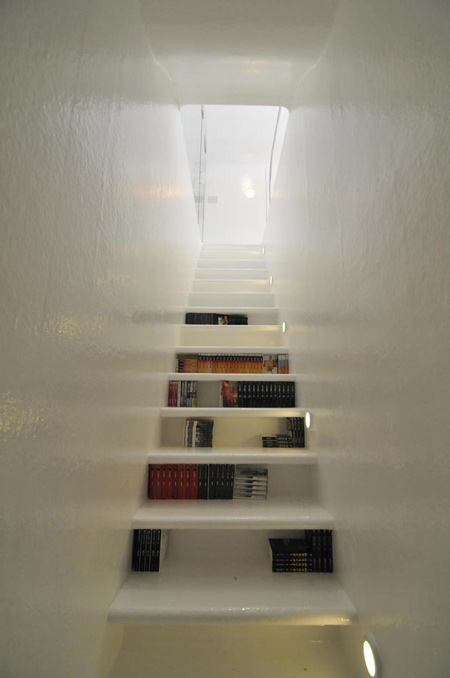
What then is the "kuh", that is "between" the two?
It is the function Y = X2 itself. A function is exactly that, a "function" of taking a value substituted into X and yielding the answer Y. It in itself is but an empty box, yet is a box containing an untouchable "capability".
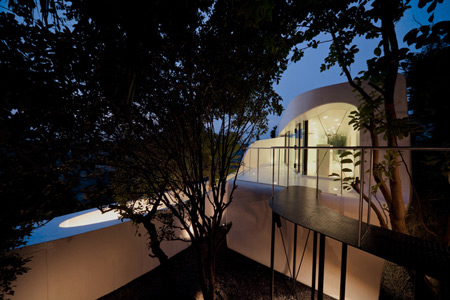
The "function" of Y = X2 is beyond touching or seeing. However, we still must say that the function of Y = X2 "exists". That is, it is an "existence" in light of "non-existence". This is the "kuh" which is "between" "existence" and "non-existence".
The reader will surely understand from this overelaboration that "kuh" which is "between" is entirely different from the concepts of a simple "happy medium" or "harmonization".
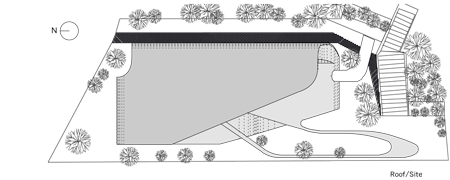
Click for larger image
Architecture is nothing more or less than creating an empty "kuh" like this function. An entity which "exists" at a dimension of "functioning", even though it itself may be "non-existent".
This is why I always stress that what is of specific importance in architecture is not the visible parts such as the floor and walls and ceiling, but the "air" encompassed thereby.
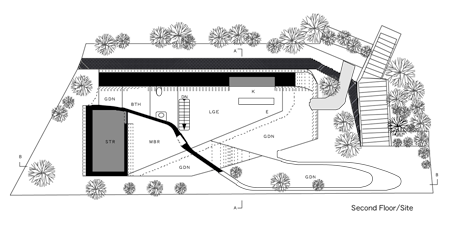
Click for larger image
The "air" encompassed by items and materials is the "function" which, upon input of something (nature or spirit) thereto, instantaneously outputs a different answer (aspect). How will the "air" of the room be transformed in the instant that there is input thereto, such as a change in the environment outside, or a change in my own spirit? What output will it show me? Tell me? Waft to me?
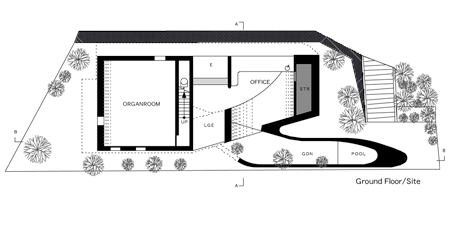
Click for larger image
Let us say that we place magnets under a flat and uniform steel sheet. As far as we can see, the steel sheet is uniform and looks the same all over. However, if we scatter sand on it, we see patterns in the sand based on a sort of order on the steel sheet. This is because initially-invisible "contour lines of air" exist there. My aim in architecture is nothing else than creating "functions" and "devices" which spontaneously enrich the superficially invisible and uniform air. This is somewhat like asking how many magnets of what size are to be placed under the steel sheet, and at what positions? This act in itself is the "form", the "rules", and the "function".
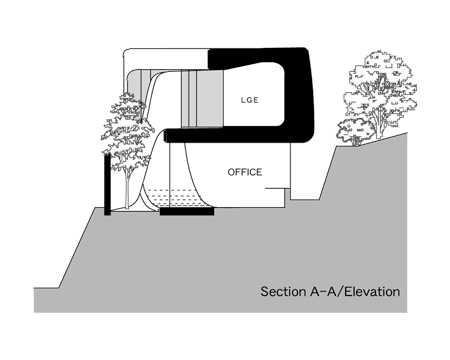
Click for larger image
Conversely, I can in no way find richness in an architecture which contains air encompassed by a unique form but void of any power to effect such "transformation".
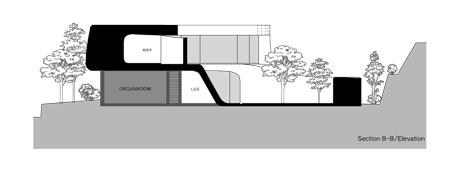
Click for larger image
To sum it up, the capacity of an architect is to scrutinize what sort of "will"-possessing and exciting "forms" , i.e., "rules", i.e., "functions", can be selected under given conditions.